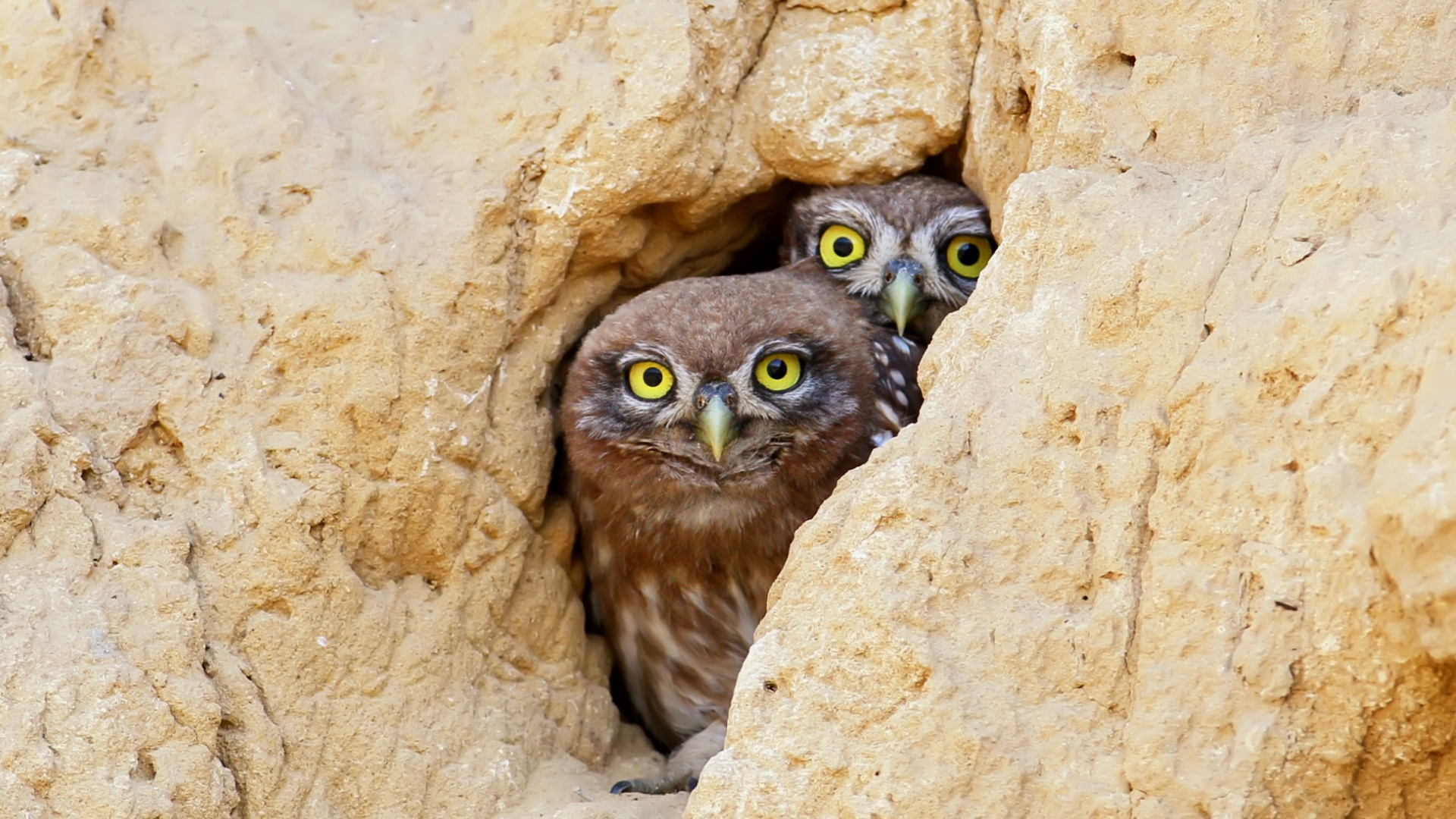Alabama happens to be home to some truly fascinating owl species, ranging from small, stealthy hunters hidden in the trees to striking, deep-voiced giants of the night.
But not all owls are easy to find. Some call proudly from your backyard, while others stay tucked away in remote forests, practically daring you to spot them.
Whether you’re a birdwatching pro or just someone who appreciates the beauty of these incredible birds, these owls are worth knowing about.
Get ready to meet Alabama’s most captivating owls – ranked from those you’re most likely to spot to the rare gems that feel like hidden treasures of the sky.
1. Eastern Screech Owl
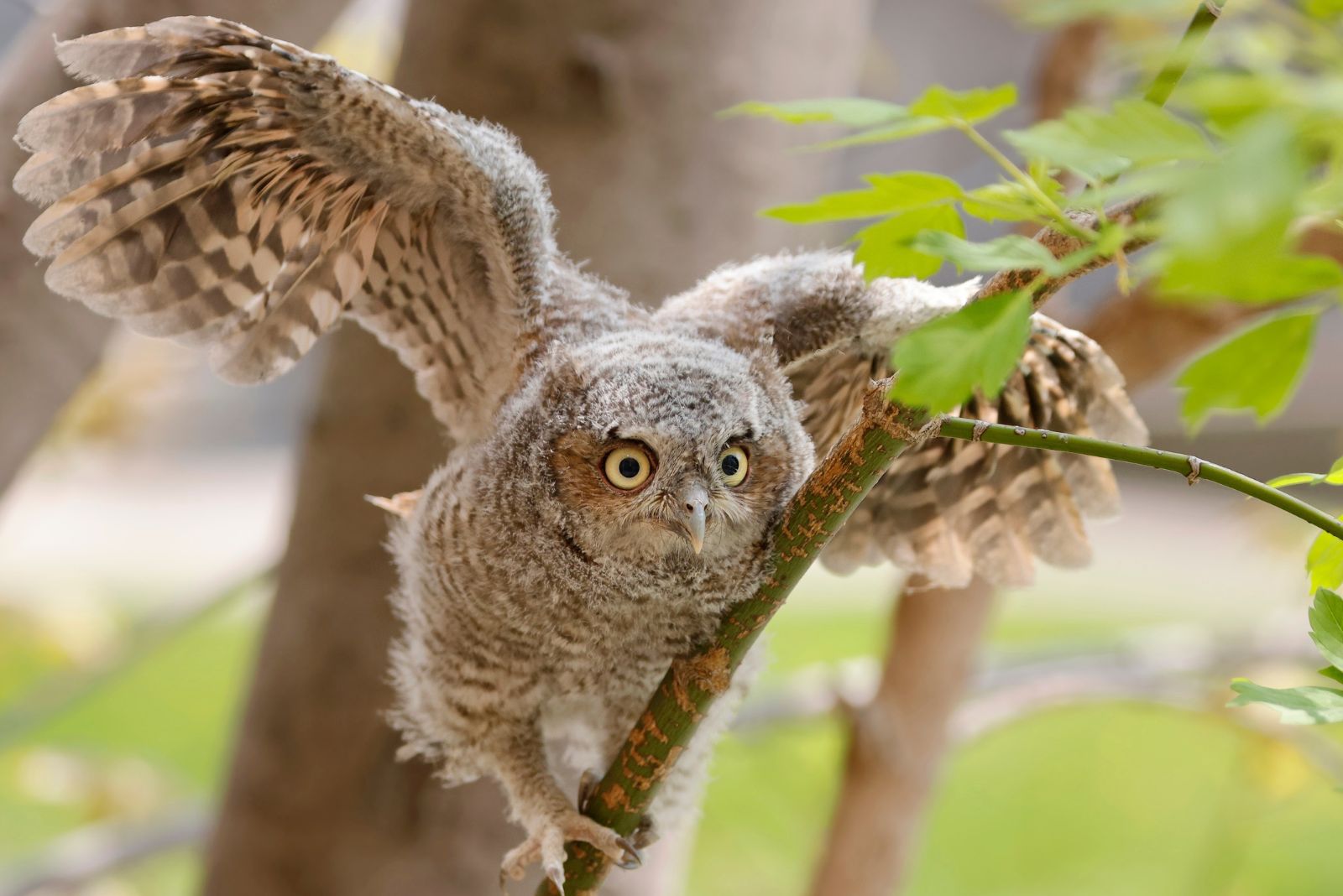
With their tiny size and ability to vanish into tree bark like feathery ninjas, the Eastern Screech Owl is a master of disguise.
These owls have big personalities and even bigger voices. Their trilling, almost haunting calls can fill the night, making them sound much larger than their 8-inch frame.
Sporting either grey or reddish-brown plumage, they blend so well with their surroundings that you could walk right past one without noticing. Common throughout Alabama, they prefer woodlands, suburbs, and even city parks – basically anywhere with a few good trees to call home.
Despite their cute, pint-sized look, they’re fierce hunters, feasting on insects, small mammals, and even other birds when the opportunity strikes.
If you ever hear a sound like a horse whinnying at dusk, it’s probably an Eastern Screech Owl showing off its vocal skills.
Just don’t expect them to be easy to spot, these little guys are champions of hide-and-seek.
2. Barred Owl
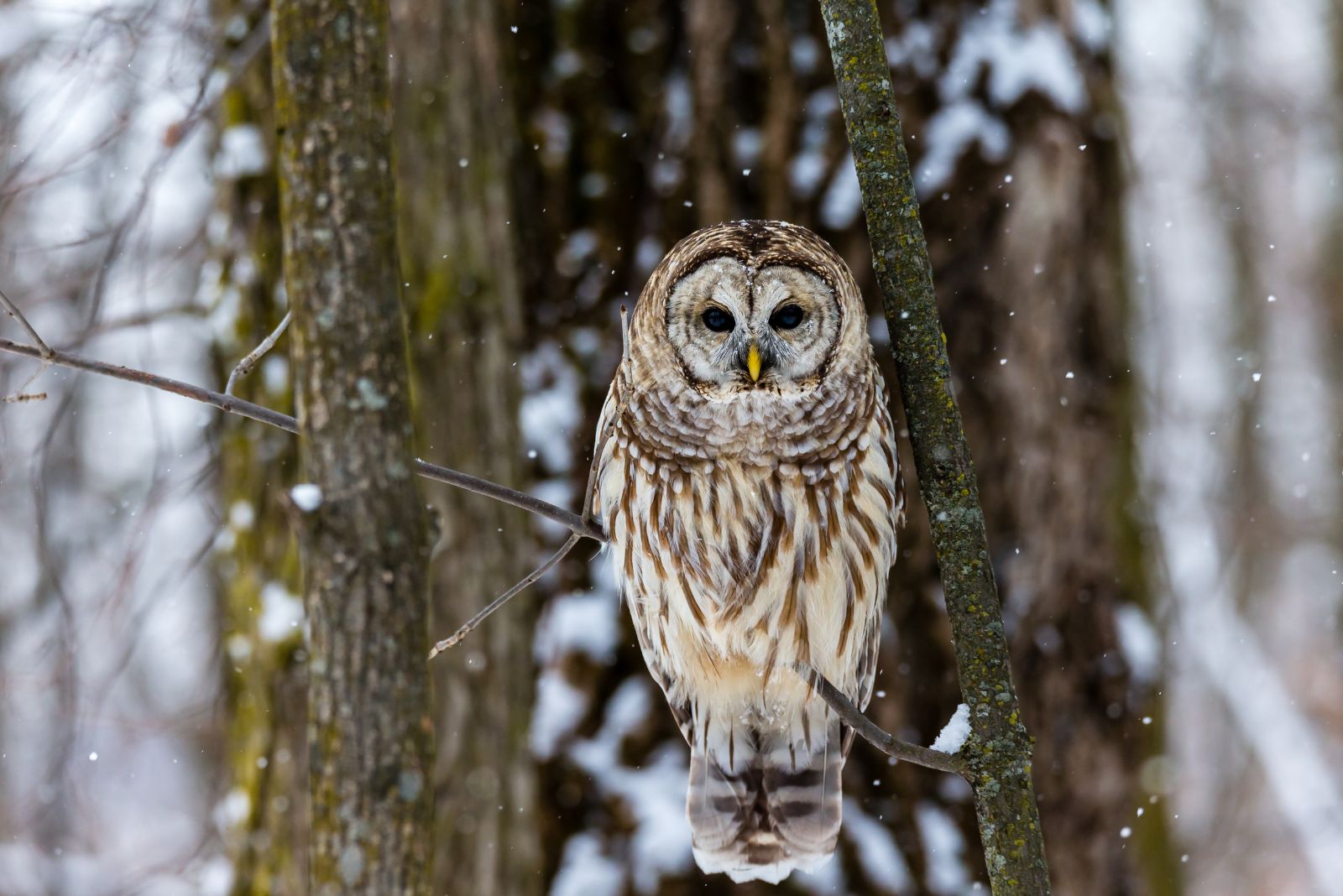
These owls are hard to miss once you spot them, thanks to their dark, soulful eyes and stunning striped plumage.
Unlike many owls, they’re not camera-shy and can often be spotted perched low in trees near swamps, wooded backyards, and rivers.
Their diet? Pretty much anything they can catch – small mammals, amphibians, and even the occasional crayfish.
Though they look wise and calm, Barred Owls can get a bit grumpy when defending their nests. They’ve even been known to swoop if they feel their babies are threatened (don’t worry, mostly just a warning).
Despite their dramatic calls and protective nature, they’re fascinating birds to observe, especially when they tilt their heads in that curious, owl-ish way, as if they’re questioning your life choices.
3. Great Horned Owl
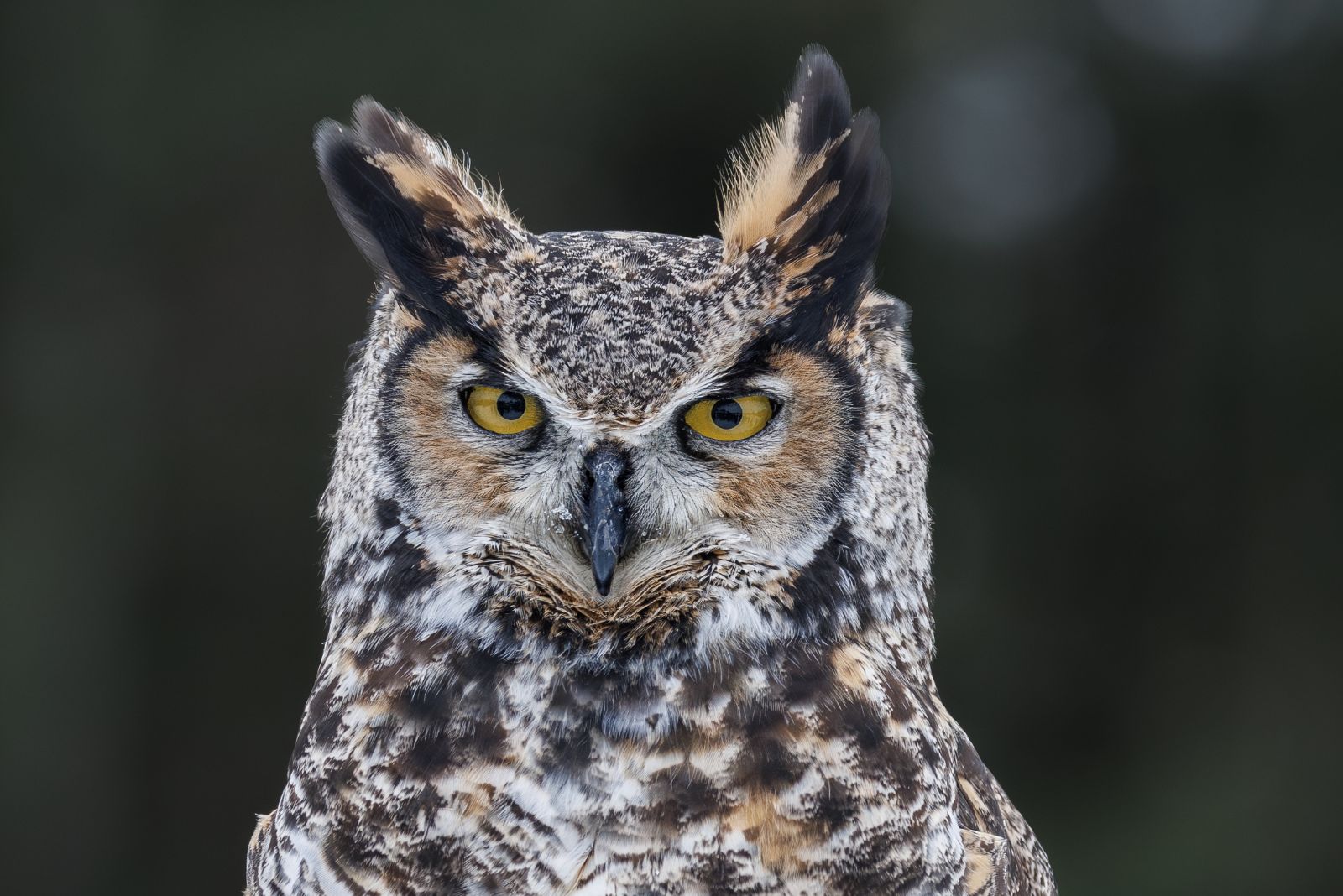
When it comes to serious owl energy, few can compete with the Great Horned Owl. With those massive tufted “horns” (which are actually just fancy feathers) and intense yellow eyes, they look like they mean business.
Often called the “tiger of the sky,” these powerful birds are top predators, capable of hunting prey much larger than themselves, including rabbits, skunks, and even other raptors.
Found all over Alabama, they’re adaptable enough to live in forests, fields, and even suburban neighborhoods if the hunting’s good. You’ve probably heard their classic deep hoots, a sound that’s both soothing and a little intimidating on a quiet night.
Despite their fierce reputation, Great Horned Owls are devoted parents, fiercely protective of their young and nesting long before spring fully arrives.
If you ever spot one staring you down, don’t panic. They’re just showing off their owl royalty vibes while keeping their turf in check.
4. Barn Owl
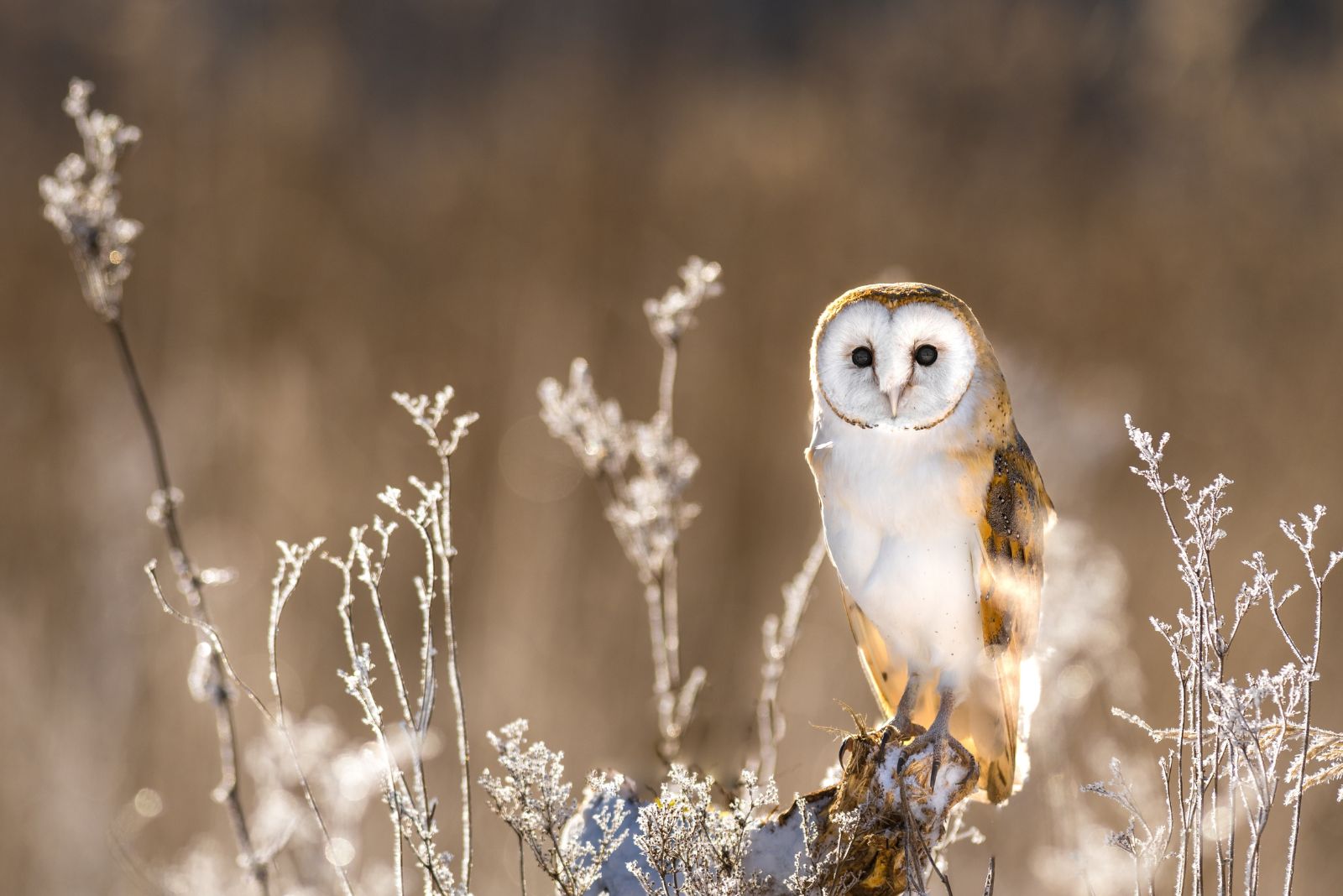
With its heart-shaped face and pale white feathers, the Barn Owl has an appearance that feels both elegant and haunting.
Their pale feathers and silent flight have earned them a spooky reputation, but they’re far more fascinating than frightening.
Often found in barns, old buildings, and hollow trees, these owls love wide-open spaces where they can hunt for rodents under the cover of darkness.
And when it comes to hunting, Barn Owls don’t mess around, they can catch prey in total darkness thanks to their incredible hearing. Their calls, however, are less soothing and more… dramatic. Imagine a long, raspy screech – the kind that might make you jump if you weren’t expecting it.
Despite their eerie soundtrack, they’re essential for natural pest control, sometimes devouring over 1,000 mice per year.
So, if you spot one silently gliding over a field, just remember – they’re less ghost and more farm-friendly exterminator.
5. Northern Saw-Whet Owl
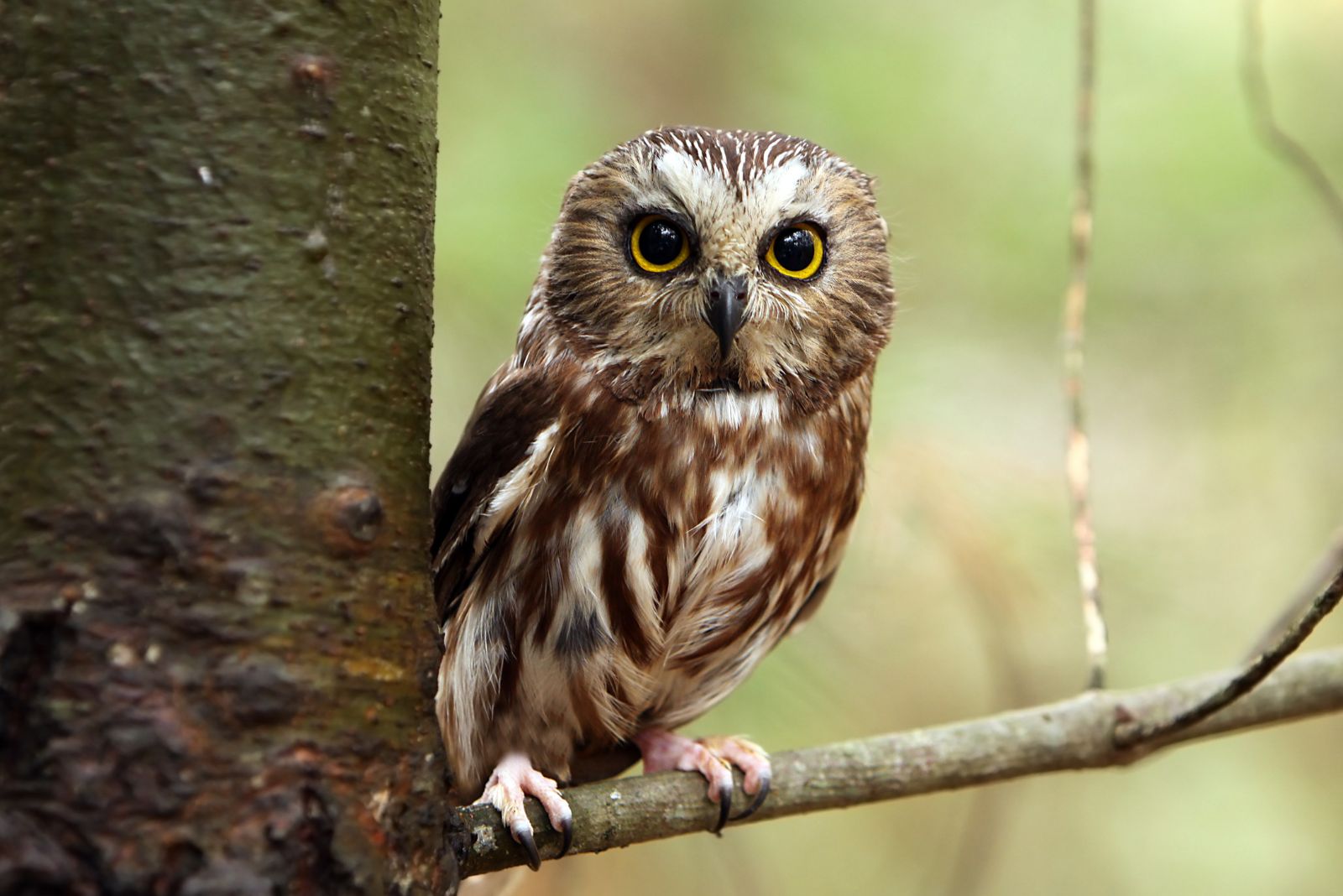
Small, round, and wide-eyed, the Northern Saw-Whet Owl looks like it belongs in a storybook. But despite its adorable size (only about 7 inches tall!) this tiny predator means business when it comes to hunting.
Named after their call, which sounds like a saw being sharpened (yes, really), these owls prefer dense forests where they stay well hidden. Though rarely seen, their unique calls often give them away at night.
These owls are all about stealth, using their incredible hearing and sharp talons to hunt mice, insects, and other small critters. While they’re not the rarest owl in Alabama, they’re certainly among the most secretive, often roosting in evergreen trees where their camouflage keeps them hidden.
If you’re lucky enough to spot one, you’ll be mesmerized by their oversized golden eyes and tiny, round shape. When it’s hunting time, they’re as fierce as they come, proving that size definitely doesn’t equal strength.
6. Long-Eared Owl
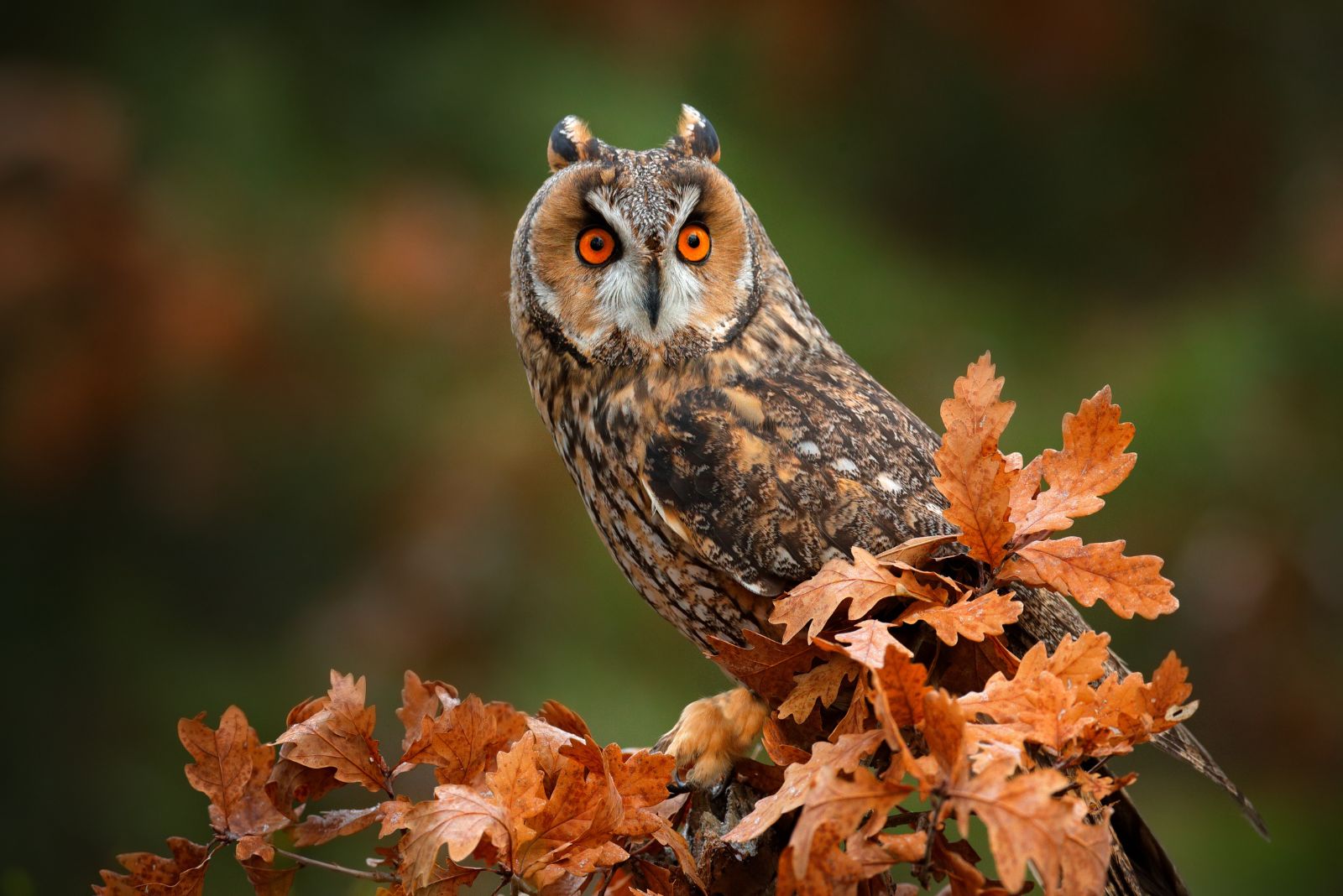
The Long-Eared Owl looks like it’s permanently caught in a state of shock and awe – thanks to its tall, feathery ear tufts and bright orange eyes that practically glow in the dark.
Despite the dramatic appearance, these owls are experts at staying out of sight. They stick to dense woodlands and roost quietly during the day, often blending so well with tree trunks that you’d miss them entirely.
While not as common as some other Alabama owls, they’re worth the search. Long-Eared Owls are nocturnal hunters, swooping down on small mammals and birds under the cover of darkness. Their long, narrow wings give them an elegant, almost moth-like flight pattern.
And their calls? Less hoot, more eerie whistles and hoots – perfect for setting the mood on a misty evening. If you’re patient enough to catch a glimpse, they’re one of the most striking and mysterious owls around.
7. Short-Eared Owl
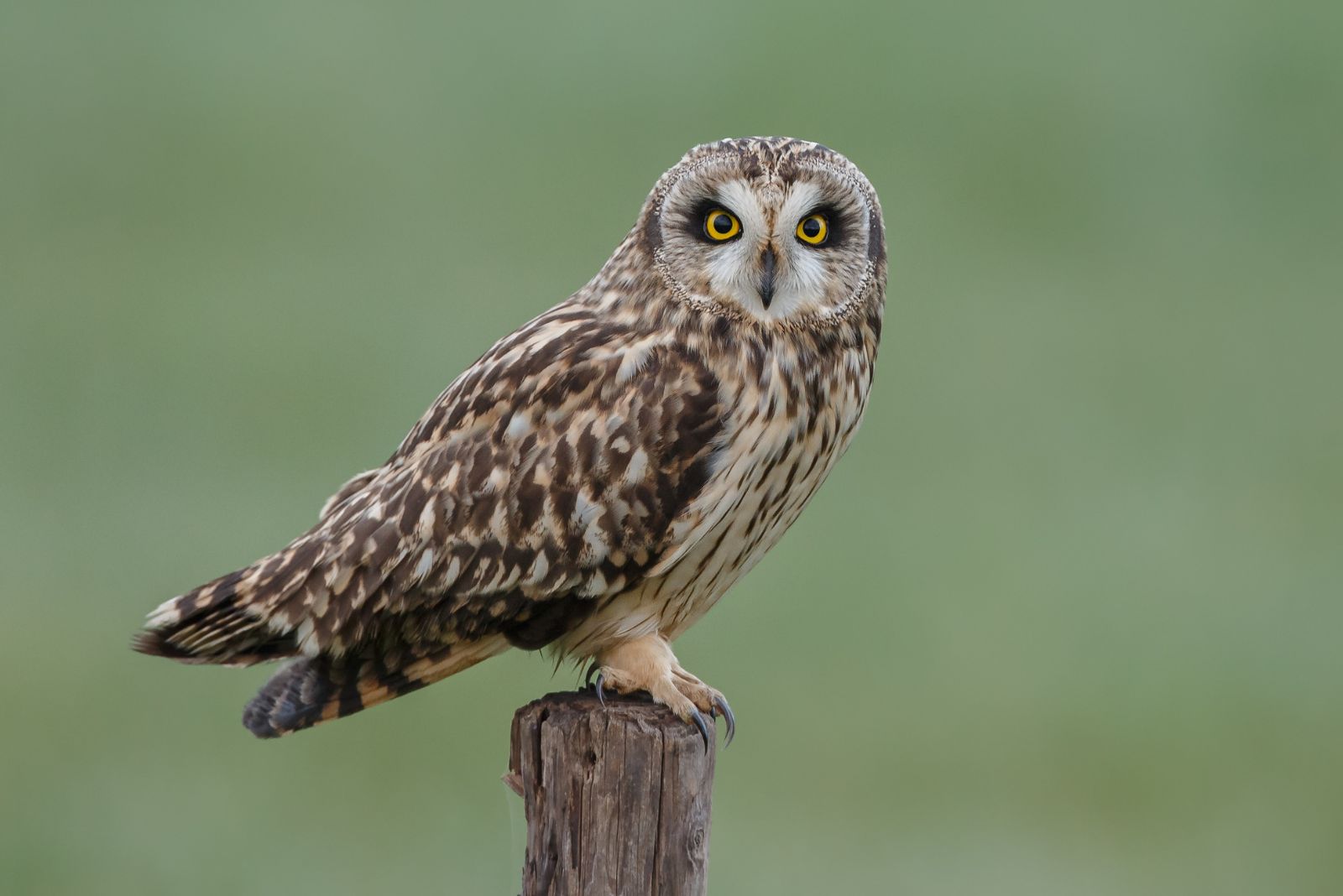
Short-Eared Owls have a way of standing out, when you can actually spot one.
Unlike most owls, they’re often active during the day, especially around dawn and dusk, making them a rare treat for birdwatchers in Alabama. You’re most likely to catch them gliding gracefully over open fields, scanning for mice and voles with their keen vision.
They have a light, moth-like flight that feels almost whimsical. They rely more on sight than sound, making them a bit different from their nocturnal cousins.
While their numbers fluctuate depending on prey availability, Short-Eared Owls are considered a bit elusive in Alabama, preferring grasslands and marshy areas.
If you’re lucky enough to spot one, you’ll get to witness one of nature’s most graceful aerial performers in action.
8. Snowy Owl
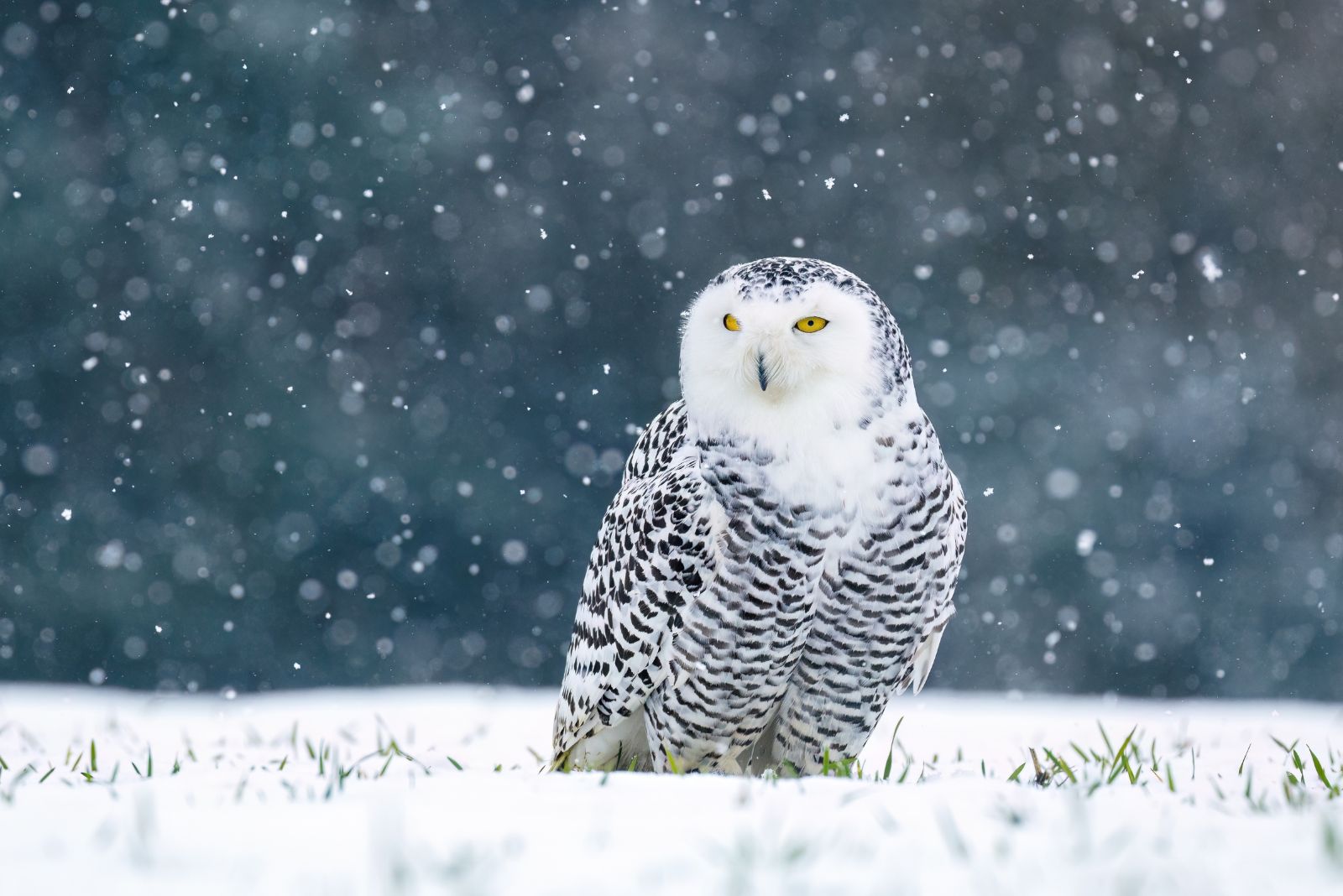
A celebrity bird in the owl world, the Snowy Owl is a rare sight in Alabama but unforgettable when it makes an appearance.
Covered in brilliant white plumage with flecks of black and piercing yellow eyes, these Arctic natives look like they belong on a movie set rather than a southern state. They’re massive too, one of the largest owls around, with a wingspan stretching nearly five feet.
Snowy Owls tend to visit Alabama during irruptions, unusual migration events when food shortages drive them further south than normal. When they do visit, they prefer wide-open areas like fields or airports.
Their hunting skills are just as impressive as their looks, with sharp talons and powerful strikes that make quick work of rodents and birds alike.
Catching a glimpse of one perched in the wild is a rare sighting you’ll definitely remember.
9. Burrowing Owl
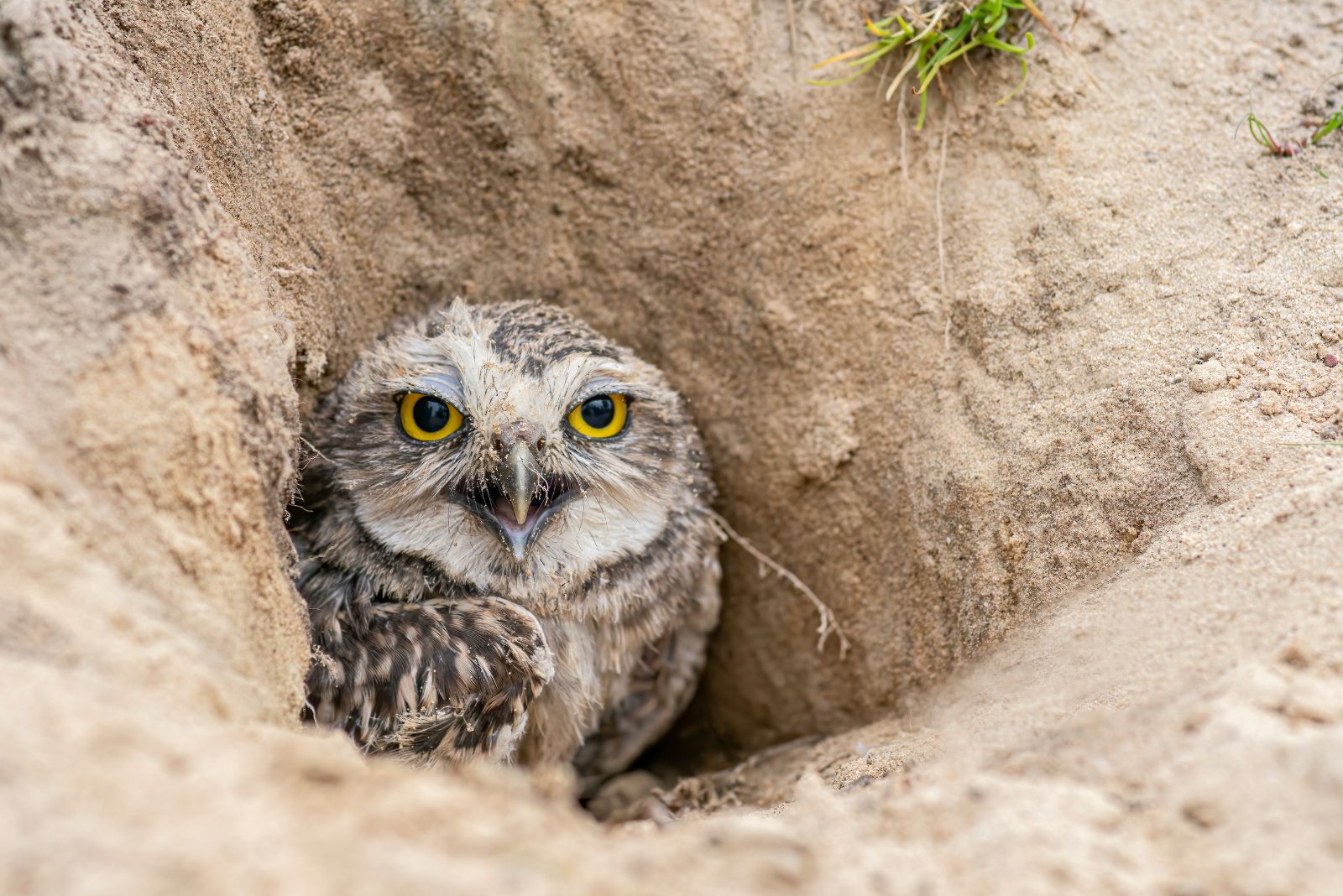
The Burrowing Owl is a total rule-breaker in the owl world. For starters, it prefers living underground rather than in trees, yes, you read that right! These quirky owls make their homes in abandoned animal burrows, often using old tunnels dug by prairie dogs or ground squirrels.
With long legs and expressive eyebrows, they’re some of the most adorable and comical owls you’ll ever see, often bobbing their heads dramatically when curious or startled.
While rare in Alabama, they’re unforgettable if you manage to spot one standing tall outside its burrow during the day. Burrowing Owls are also champions of pest control, feasting on insects, small rodents, and even reptiles.
Despite their small size, they can be quite vocal, making chattering and cooing sounds to ward off threats.
If you happen to catch one doing its signature head tilt, you’ve just witnessed one of nature’s most charismatic characters in action.
10. Flammulated Owl
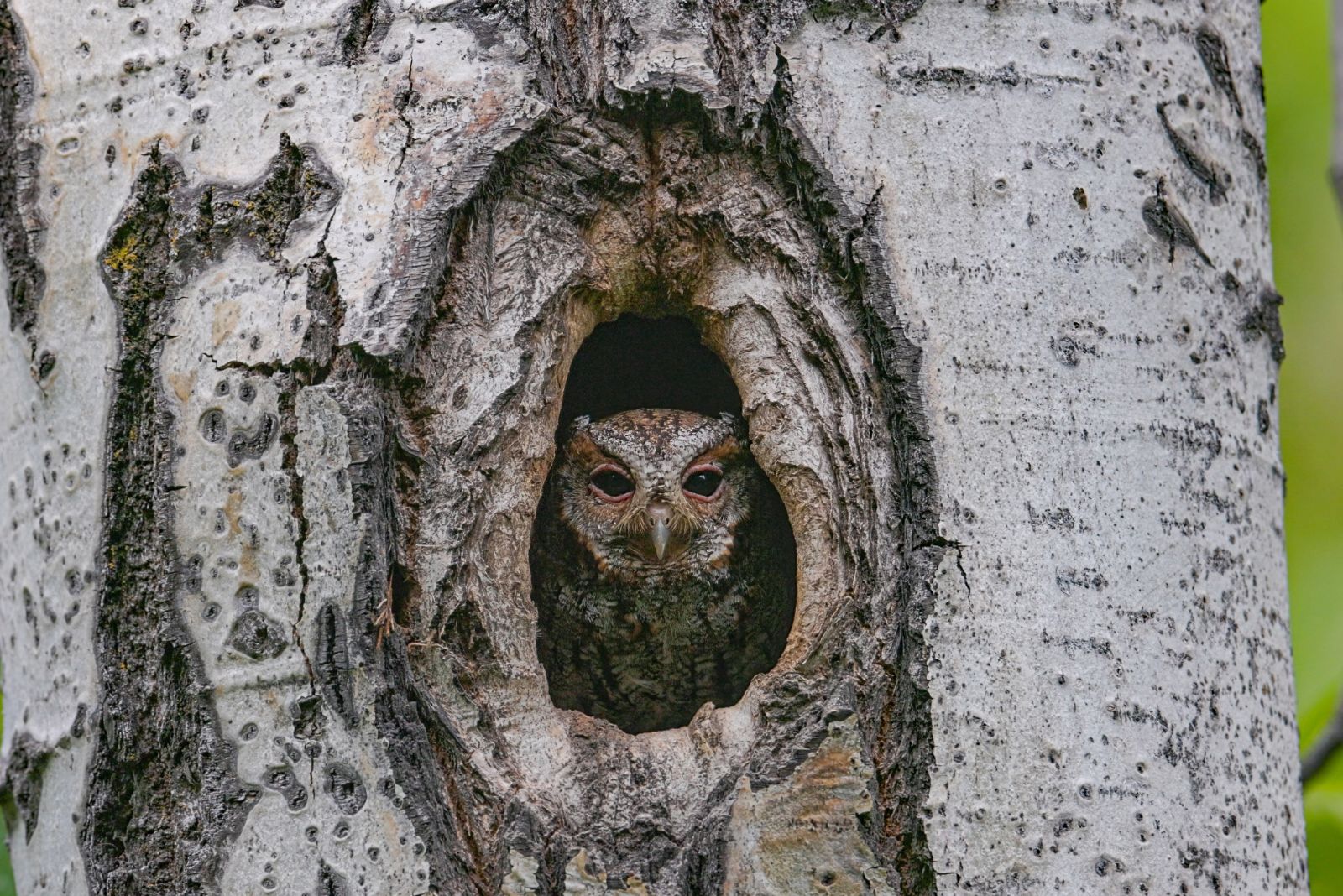
The Flammulated Owl is so rare and secretive that spotting one in Alabama feels like winning the wildlife lottery.
These tiny owls, barely the size of a soda can, are known for their flame-like markings on their wings and feathers, giving them a fiery, coppery glow in just the right light. Despite their striking looks, they’re masters of blending in, thanks to their bark-colored plumage that helps them disappear against tree trunks.
Flammulated Owls prefer dense pine forests and are nocturnal by nature, making them even harder to find. Their soft, low hoots can be tricky to hear, too – more like a distant whisper than a typical owl call.
While they’re not the most dominant hunters of the owl world, they excel at feasting on insects, making them valuable for natural pest control.
Spotting one is a rare treat, as they’re among Alabama’s most elusive wildlife gems.

